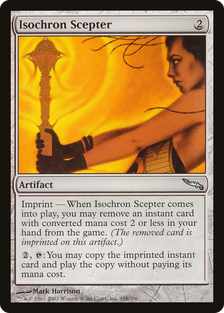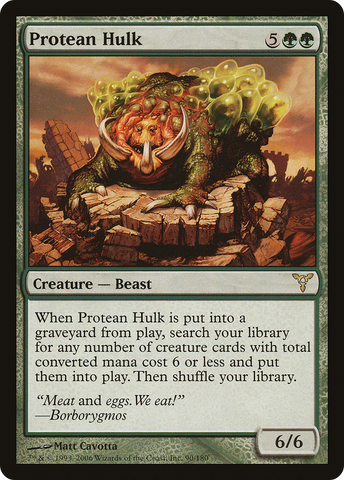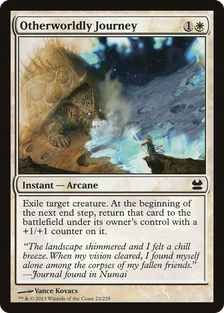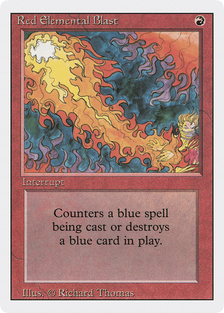cPDH – Fact or Fiction?
- PDH Home Base

- Sep 22, 2019
- 7 min read

Does cPHD (competitive PDH) exist? I have thought a lot about that, discussed it with people and done research on the topic. After all that I can say the answer is a definite and resounding maybe. It all depends on how you define “competitive” in a setting that is multi-player and at its core a social and casual format over a tournament-centric one.
Getting on the same page
So to start things off, let’s look at what I mean when I say cPDH so that we are all on the same page. If you’re thinking about decks which will consistently win on turn three in a four player pod, if not disrupted, then no cPDH does not exist. If the c in cPDH just refers to the competitive mind set — focusing on winning as the number one goal and on playing decks that have the best chance of achieving that goal — then yes, any format will be competitive if played that way. When I talk about cPDH I mean that there are high-tier decks that have a power level far above other decks in the format, making for some unbalanced games. These are decks that force the competition to build in a certain way and play specific type of cards to counteract their strategy, thus forming a sub-meta of their own. This is why the answer to the cPDH question is maybe. Not because I am unsure, but because the question is complex, hinging on more factors than just the deck you bring to the table.
To investigate whether or not PDH has such decks I feel it’s important to look at what separates cEDH from regular EDH. Our format is based off EDH and it’s the best documented multi-player format out there. When you sit down at a table with three normal EDH decks and one cEDH deck and all decks are piloted with the intent of winning, then the cEDH deck will win most games. On a raw power level it is just better than the rest. But it's not only playing more powerful cards, it is also utilising more powerful strategies.
How to win better?
In a multi-player setting, with increased life totals, the most reliable way to win is combo. Combo scales better than any other strategy against increased player numbers and life totals. Any infinite loop will do the same regardless of how many people there are or how much life they have. For that reason cEDH deck always have a combo win condition. It might not be plan A but even Blood-Pod (a grindy hate bear aggressive deck) has a Kiki-Combo. So as a baseline, let’s just generalize it to “competitive decks in multi-player win with combo”. When everyone at the table is going to try to win with some kind of combo, interaction and disruption goes up in value. Killing a creature slows down an aggressive creature strategy but it straight up stops a creature based combo from winning. With this in mind it is no surprise that preemptive disruption like stax pieces and hate bears and reactive interaction like removal and counter spells are abundant in cEDH. The last piece of the puzzle is speed and consistency. When the game boils down to a race to combo, games are won by having more mana, more cards, and the right cards. Ramp and fast mana, card draw, and tutors are the remaining components. Anything that does not follow this game plan will hurt a deck’s consistency and thus make it less powerful.
It's not about how you win, it's about when
How does all of this translate to our format? We have combos, check. We have disruption and interaction, check. We have ramp, card draw and tutors, check. Here is where things get tricky: expected turn to win (ETW from here on out). When you goldfish 100 games, what percentage of the time will you win by turn x? This is determined by the total mana cost of your combo, the number of cards in your combo and the density of cards that help you assemble the combo (tutors, redundant combo pieces, draw, and filtering). Let’s look at the infamous flicker drake combo and compare it to Flash + Protean Hulk.
Drake comes in at about eight mana to combo off from hand (disregarding karoo lands and such). Flash Hulk need two. Drake need four cards to win, Again, Flash Hulk needs two. It is obvious that Flash Hulk is vastly more powerful, but that is largely because Flash Hulk has a vastly lower ETW. Flash Hulk can go off on turn 2-3; while Drake sits more in the turn 6-8 range. This is important because three players can not kill you from forty life by turn two with creature damage. Three players can however do thirty points of damage by turn eight. This might be the most important point in this article. A single combo focused deck may just die before it gets that chance to go off even when playing against fair (winning through combat and board state not combo) creature decks. The best combo decks in our format can win 1 vs 3, but not every game.
This leads into one of the points I made at the beginning about what the definition of competitive is. Combo-focused PDH decks do not force their competition to build their deck any different. They also don't make any decks or strategies unplayable by themselves. Furthermore, the disruption you need to combat PDH combo strategies is the same that you already want for the fair creature decks, because all viable combos in our format are creature based. Instant speed creature removal can stop any combo. Every color has ways to do this too. Black should be a no brainer, blue has bounce/counters and the low toughness of almost all combo piece creatures make red burn spells very good at this too. White and green are not known for great instant speed removal at the common level but they too have ways to deal with combos. Sure Journey to Nowhere wont do the trick but Last Breath or Otherworldly Journey will. The same is true for cards like Return to Nature, Titanic Brawl or Vines of Vastwood in green.
From theory to the field of battle
Let’s change up our play group a little. We now have two combo decks and two creature decks at the table. In this case, two players need to deal sixty damage in about eight turns. This is a lot harder but if they work together to take out one and delay the other with some disruption, it’s still doable. When you find yourself at a table staring down Disciple of Deceit, Ley/Lore Weaver, and Izzet Guildmage, you and your trusted Sigil Captain deck might start to feel like you have few ways to stop all of them from going off. Suddenly you are holding on to your Vines of Vastwood as disruption and thinking “I wish I had more effects like this in my deck.”
Here is where I came to my “maybe” conclusion. The gap in power level, the kind of disruption and the speed of combos all create a situation in which the success of combo decks depends on how many combo decks are playing. One of them at a table still lets you play a fair, grindy, casual game. However when these decks are the mainstay of your meta, you will have to adjust. Some strategies become less viable and decks should start to include more and cheaper interaction. This is really fascinating for me. Some decks that are not that good in a creature-heavy meta suddenly become a lot better in a combo-heavy meta, and vice versa. I will look at several decks like Skyward-Eye Prophets, Rona, Disciple of Gix or Korozda Gorgon and how they can be built differently to perform well in a cPDH-meta and how to gear them to a more grindy, value meta in future articles.
A word on Voltron. Some of you might have been thinking “but what about Crackling Drake?” while reading this article. Voltron is a strange beast. It scales well with increased life totals but very poorly with increased player numbers. To evaluate Voltron you have to look at the expected turn to take out the first person and the ETW for the remaining two. If you get two or more turns after killing the first player to take out the remaining two you are in great shape. If you also have disruption and interaction to back that up, all the better. This is in my mind the biggest reason besides card draw why aggro Voltron is far less powerful compared to Voltron control.
Lets look at out cPDH-meta playgroup from before. The Izzet Guildmage is probably the biggest threat because they could easily go off on turn five. Let's say you went first and everyone has a pretty optimal game. On turn five you cast your Drake, slam a Clout of Dominus on it an take down the Izzet mage. Ley/Lore Weaver are your next concern because they could go off on their next turn if they already cast Lore Weaver or the turn after if they haven't. We are still in a great spot though since Disciple will most likely go off around turn seven and we have Snapback in hand for the Weaver. That should buy us enough time to take out both. This illustrates a lot of the points I made including the impact that ETW has in relation to other players speed but also how you start running cards you otherwise might now. Personally I think Snapback is always great in Crackling Drake but in a cPDH-meta I would auto include it in every blue deck. The same can be said for cards like Red Elemental Blast and Pyroblast. In a grindy creature meta I might not run them at all because they generate no real value and run the risk of being a dead card, but in a Blue-heavy combo meta, they a one mana spell that stops an opponent from winning, stops an opponent from countering your removal or stops their interaction. Cheap and flexible.
In conclusion, if cPDH exists or not depends on the meta of your play group. You can have a meta that will have the feel and play patterns very much akin to cEDH but in a different play group the same deck might just die to a swam of tokens or an Ulamogs Crusher. Does cPDH exist? A definite and resounding maybe.
-Ursine
@PDH_Homebase
























































Comments